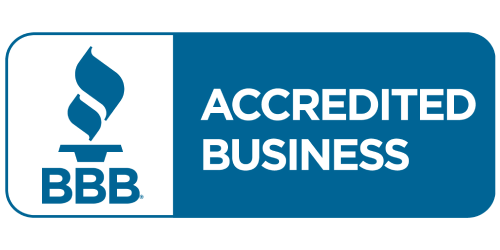Your workplace injury left you unable to work, facing mounting bills, and waiting months or years for your workers compensation case to settle. The insurance company denies legitimate claims, delays treatment approvals, and offers pennies on the dollar for injuries that destroyed your ability to earn a living. You need money now to pay rent, feed your family, and keep the lights on while fighting for fair compensation. Workers compensation lawsuit loans from 123 Lawsuit Loans provide cash in 24 hours so you can survive financially while your attorney battles insurance companies for the settlement you deserve. This is non-recourse funding – you pay nothing if your case doesn’t win.
Workers compensation covers approximately 2.8 million workplace injuries annually according to the Bureau of Labor Statistics, with numbers increasing 7.5% from 2021 to 2022. The average workers compensation settlement is $29,750-$44,179 nationwide, but individual cases range from $2,000 to several million dollars depending on injury severity and permanent disability. Third-party lawsuits connected to workplace injuries settle for an average of $72,000, with catastrophic cases reaching millions when negligent contractors, defective equipment, or dangerous premises cause injuries.
Workers compensation cases typically take 12-24 months to resolve, with complex permanent disability claims extending 2-4 years before final settlement. During this time, insurance companies employ aggressive tactics to deny benefits, dispute medical treatment, and pressure injured workers into accepting inadequate settlements that don’t cover lifetime medical needs or permanent disability impacts.
We understand the crushing financial pressure injured workers face after losing income while insurers delay, deny, and defend against legitimate claims. That’s why we offer non-recourse pre-settlement funding with 24-hour approval. No credit checks. No income verification. And no monthly payments. Just immediate cash to cover expenses while your attorney fights insurance companies that profit from denying your benefits.
The Devastating Financial Impact of Workplace Injuries – Income Loss and Medical Bills
Workplace injuries create immediate financial crises that worsen dramatically during the months or years workers compensation cases require for resolution through settlement or trial.
Immediate Income Loss and Disability
Workplace injuries eliminate your ability to work and earn income instantly. Construction workers, factory employees, healthcare professionals, and service workers lose their entire paychecks when injuries prevent job performance.
Workers compensation temporary disability benefits pay only 2/3 of weekly wages, capped at state maximums of $600-$1,680 weekly depending on location. This 33% income reduction creates immediate financial hardship.
California limits temporary disability to $1,136 weekly maximum for injuries after January 1, 2025. New York caps benefits at $1,225 weekly. Texas maximum reaches $1,189 weekly. Even high earners lose substantial income.
Self-employed workers and independent contractors often have no workers compensation coverage at all, losing 100% of income with no disability benefits.
Medical Treatment Delays and Gaps
Insurance companies routinely deny or delay medical treatment authorizations. Injured workers need immediate surgery, physical therapy, or specialist care but wait weeks or months for approval.
Pre-authorization requirements prevent access to treatment even when doctors recommend immediate intervention. Workers suffer unnecessarily while insurers review medical records and request additional documentation.
Out-of-network provider restrictions limit treatment options. Injured workers can’t see specialists or use preferred doctors without insurance approval.
Medical treatment gaps between authorization denials and appeals create permanent damage. Delayed surgeries allow injuries to worsen, requiring more extensive treatment later.
Living Expenses Without Income
Mortgage payments, rent, car payments, and utility bills continue regardless of workplace injury. Families face foreclosure and eviction when workers compensation benefits can’t cover basic expenses.
Groceries, transportation, and children’s expenses create overwhelming financial pressure. Families struggle to afford food and gas when primary earners lose income.
Credit card debt accumulates rapidly when injured workers use plastic to cover expenses. Minimum balances of $300-$1,000 monthly add to financial strain.
Vehicle repossession threatens transportation needed for medical appointments and potential job searches. Losing cars creates additional hardship.
Family Financial Stress
Spouses and family members may need time off work for medical appointments, caregiving, and insurance company meetings. Dual-income families lose both earners’ wages.
Childcare costs increase when injured workers can’t care for children during recovery. Professional daycare costing $200-$400 weekly drains remaining income.
Family member income often proves insufficient to cover household expenses designed for two-earner families. Single-income households collapse financially.
Divorce rates increase among injured worker families under financial stress. Marriage dissolution adds legal fees and support obligations to existing crises.
Credit Damage and Long-Term Financial Impact
Missed payments on mortgages, credit cards, and loans destroy credit scores. Credit ratings drop 100-200 points within months of workplace injury.
Bankruptcy becomes necessary for many injured workers who can’t pay debts during extended disability. Chapter 7 and Chapter 13 filings create 7-10 year credit impacts.
Future loan applications get denied or require higher interest rates. Poor credit affects employment prospects, housing applications, and insurance costs.
Retirement account depletion for survival eliminates future security. Early withdrawal penalties and taxes consume 30-50% of retirement savings.
Types of Workers Compensation Cases We Fund
We provide funding for all types of workers compensation cases including both standard comp claims and third-party lawsuits arising from workplace injuries.
Standard Workers Compensation Claims
Construction Accident Cases
Falls from Height including scaffolding collapses, ladder accidents, and roof falls cause fractures, spinal injuries, and traumatic brain damage. Construction falls account for 35% of workplace fatalities.
Caught Between Accidents involving heavy machinery, vehicles, and collapsing structures cause crushing injuries, amputations, and permanent disability. Equipment accidents create catastrophic injuries requiring extensive medical treatment.
Struck By Objects including falling tools, materials, and equipment cause head trauma, fractures, and soft tissue damage. Hard hat failures and inadequate safety measures create employer liability.
Electrical Injuries from power line contact, defective wiring, and equipment failures cause burns, cardiac damage, and neurological injuries. Electricians and construction workers face high-voltage exposure risks.
Trench Collapse Cases burying workers alive cause suffocation, crushing injuries, and death. OSHA violations and inadequate shoring create preventable tragedies.
Manufacturing and Industrial Injuries
Machinery Accidents involving presses, conveyor systems, and production equipment cause amputations, crushing injuries, and lacerations. Inadequate safety guards and training create liability.
Repetitive Stress Injuries including carpal tunnel syndrome, tendonitis, and back strain from assembly line work. Ergonomic failures and production quotas cause permanent disability.
Chemical Exposure to toxic substances causing respiratory damage, skin conditions, and organ damage. Manufacturing facilities expose workers to dangerous chemicals without adequate protection.
Burn Injuries from molten metal, chemical spills, and equipment malfunctions cause scarring and permanent disfigurement. Industrial accidents create life-altering burn injuries.
Hearing Loss from excessive noise exposure in factories and manufacturing plants. Inadequate hearing protection causes permanent auditory damage.
Healthcare Worker Injuries
Lifting Injuries from patient transfers causing back injuries, herniated discs, and spinal damage. Nurses and nursing assistants suffer debilitating back conditions.
Needlestick Injuries exposing workers to bloodborne pathogens including HIV and hepatitis. Contaminated sharps create serious health risks.
Assault Injuries from violent patients causing fractures, concussions, and psychological trauma. Mental health facilities and emergency rooms present assault risks.
Slip and Fall Accidents on wet floors, spills, and contaminated surfaces. Hospital environments create fall hazards despite safety protocols.
Infectious Disease Exposure including tuberculosis, COVID-19, and other contagious illnesses. Healthcare workers face occupational disease risks.
Transportation and Delivery Injuries
Vehicle Accidents involving delivery trucks, forklifts, and company vehicles cause severe injuries and fatalities. Commercial driving creates high accident risks.
Loading Dock Accidents including falls, being struck by equipment, and crushing injuries. Warehouse operations create multiple hazards.
Overexertion Injuries from lifting packages, loading trucks, and repetitive motions. Delivery workers suffer hernias, back injuries, and joint damage.
Dog Attacks on postal workers and delivery personnel cause lacerations, infections, and psychological trauma. Animal attacks create compensable injuries.
Third-Party Workplace Injury Lawsuits
Defective Equipment Product Liability
Defective Machinery including presses, saws, and industrial equipment with design flaws or manufacturing defects. Equipment manufacturers face strict liability when products fail.
Safety Equipment Failures involving defective harnesses, helmets, and protective gear. Safety product manufacturers liable when gear doesn’t protect workers.
Forklift and Vehicle Defects causing brake failures, steering malfunctions, and rollover accidents. Commercial vehicle manufacturers face product liability claims.
Ladder and Scaffold Defects including structural failures, design flaws, and inadequate safety features. Equipment suppliers liable for defective fall protection.
Motor Vehicle Third-Party Claims
Drunk Driver Accidents involving commercial vehicles, delivery trucks, or passenger cars hitting workers. Negligent drivers create third-party liability.
Distracted Driver Cases where texting, phone use, or other distractions cause workplace vehicle accidents. Driver negligence creates recovery opportunities beyond workers comp.
Commercial Trucking Accidents involving semi-trucks hitting workers at job sites or on roadways. Trucking companies face substantial liability.
Defective Vehicle Cases where mechanical failures, brake defects, or design flaws cause accidents. Auto manufacturers liable for vehicle defects.
Premises Liability Third-Party Cases
Unsafe Work Site Conditions at third-party locations where employees work. Property owners liable for dangerous conditions causing worker injuries.
General Contractor Negligence at construction sites where contractors create hazards affecting subcontractor employees. Multi-employer liability common in construction.
Maintenance Company Failures where third-party maintenance creates hazards. Building maintenance companies liable for negligent repairs.
Property Owner Defects including structural failures, inadequate lighting, and dangerous conditions. Landlords and property owners face premises liability.
Subcontractor and Multi-Employer Cases
Co-Employee Exceptions in certain states allowing suits against co-workers under employer control. Gross negligence or intentional acts create liability.
Dual Capacity Employers where employers also act as manufacturers or contractors. Workers may sue employers wearing different legal hats.
Statutory Employer Cases involving general contractors responsible for subcontractor employee safety. Construction industry creates complex liability scenarios.
Workers Compensation Settlement Values and Third-Party Recovery
Settlement amounts vary dramatically based on injury severity, permanent disability ratings, lost wage calculations, and whether third-party claims exist alongside workers comp benefits.
Standard Workers Compensation Settlement Ranges
Temporary Disability with Full Recovery: $2,000-$25,000
Minor Injuries including sprains, strains, and soft tissue damage with 6-12 week recovery periods settle for $2,000-$8,000 covering medical costs and temporary wage replacement.
Moderate Injuries requiring 3-6 months recovery with possible surgery settle for $8,000-$25,000. Fractures, meniscus tears, and herniated disc cases fit this range.
Average weekly benefits of $600-$1,200 for 12-26 weeks create settlements covering temporary total disability periods plus medical treatment costs.
Permanent Partial Disability: $15,000-$150,000
5-15% Permanent Disability ratings for injuries causing lasting impairment settle for $15,000-$45,000. Partial finger amputations, moderate back injuries, and chronic pain conditions fall here.
20-40% Permanent Disability cases involving significant impairment settle for $45,000-$100,000. Severe back injuries, major joint damage, and complex surgeries create higher ratings.
45-70% Permanent Disability settlements reach $100,000-$150,000 for extensive impairment. Multiple body part injuries and severe functional limitations justify maximum settlements.
California permanent disability calculations use complex formulas based on disability percentage, age, and occupation. Younger workers receive higher settlements for same impairment ratings.
Permanent Total Disability: $150,000-$500,000+
Complete Work Disability cases where workers can never return to gainful employment settle for maximum state benefits over lifetime expectancies.
Lifetime Medical Coverage adds substantial value beyond wage replacement. Future surgery needs, medications, and therapy create significant liability.
Structured Settlements spread payments over decades rather than lump sums. Annuity values of $300,000-$500,000 provide lifetime income.
Third-Party Lawsuit Settlement Ranges
Motor Vehicle Third-Party Cases: $50,000-$2,000,000
Moderate Injury Accidents settle for $50,000-$150,000 covering medical costs, lost wages, and pain and suffering not available in workers comp.
Severe Injury Cases involving permanent disability settle for $150,000-$500,000. Spinal injuries, brain trauma, and amputations create substantial damages.
Catastrophic Injury Settlements reach $500,000-$2,000,000 for life-altering injuries. Paralysis, severe burns, and permanent brain damage justify maximum compensation.
Defective Equipment Product Liability: $100,000-$5,000,000
Equipment Failure Cases settle based on injury severity and manufacturer resources. Major manufacturers carry $10-100 million product liability insurance.
Design Defect Claims proving systemic product flaws settle higher than isolated manufacturing defects. Evidence affecting multiple users increases settlement leverage.
Punitive Damages Potential in cases involving corporate knowledge of defects and concealment. Manufacturers face substantial penalties for knowing dangers.
Premises Liability Third-Party: $75,000-$3,000,000
Property Owner Cases settle based on injury severity and negligence evidence. Clear violations and preventable hazards increase settlement values.
Construction Site Accidents involving general contractors settle for $100,000-$1,000,000+ depending on injury severity and safety violations.
Commercial Premises Cases where businesses create hazards affecting workers settle based on corporate policies and safety failures.
Notable Settlement Examples
$8.2 Million Construction Fall – Worker fell 40 feet from scaffold due to general contractor negligence, suffering spinal cord injury requiring lifetime care.
$4.5 Million Defective Equipment – Manufacturing worker lost arm in defective press, receiving workers comp plus product liability settlement.
$2.8 Million Truck Accident – Delivery driver hit by drunk driver received workers comp plus third-party lawsuit recovery.
$1.9 Million Chemical Exposure – Factory worker developed lung disease from toxic exposure, settling workers comp and premises liability claims.
Why Insurance Companies Fight Workers Compensation Claims
Workers compensation insurers employ sophisticated strategies to deny claims, minimize settlements, and avoid paying legitimate benefits despite clear injuries and employer liability.
Claim Denial Tactics
Insurance companies deny 20-30% of workers compensation claims initially, hoping injured workers give up rather than appeal denials.
Injury Causation Challenges claim injuries resulted from pre-existing conditions, degenerative changes, or non-work activities rather than workplace accidents.
Employment Status Disputes argue workers are independent contractors rather than employees to avoid coverage obligations.
Notice Deadline Technicalities deny claims for missing reporting deadlines even when employers knew about injuries.
Medical Treatment Restrictions limit authorized providers, deny specialist referrals, and refuse recommended surgeries.
Surveillance and Investigation
Private investigators conduct surveillance hoping to catch injured workers performing activities contradicting disability claims.
Social media monitoring searches for posts, photos, or videos suggesting normal activities despite claimed injuries.
Medical record reviews search for pre-existing conditions or prior injuries to blame for current disability.
Employer witness statements attempt to establish alternative injury causes or question accident circumstances.
Settlement Pressure Tactics
Lowball Initial Offers of 20-40% of case value pressure desperate workers into quick settlements.
Delay Strategies extend cases through excessive medical examinations, discovery requests, and continuances to exhaust worker resources.
Lump Sum Pressure pushes workers toward inadequate lump sum settlements rather than lifetime medical coverage and ongoing benefits.
Medical Treatment Denials force workers to pay out-of-pocket for care, creating settlement pressure.
Defense Medical Examinations
Insurance doctors regularly find minimal disability, question treatment necessity, and dispute work restrictions despite clear injuries.
IME Shopping involves using doctors known for minimizing injuries and denying disability regardless of medical evidence.
Functional Capacity Evaluations designed to show greater abilities than treating physicians document.
Causation Opinions attribute injuries to pre-existing conditions rather than workplace accidents.
The Application Process for Workers Compensation Lawsuit Funding
Getting pre-settlement funding requires evaluation of injury severity, settlement potential, insurance coverage, and case strength including both workers comp and third-party claims.
Step 1: Case Information and Injury Details
Complete our application providing information about your workplace injury including accident date, employer, insurance carrier, injury type, and current treatment status.
Describe how the injury occurred, what body parts were affected, what medical treatment you’ve received, and your current work status.
Include workers comp case number, attorney contact information, and any third-party lawsuit details if applicable.
Provide current financial situation including income loss, bills past due, and immediate funding needs.
Step 2: Medical Documentation Review
We analyze medical records including emergency room reports, diagnostic imaging, surgical reports, and therapy documentation to understand injury severity.
Our medical reviewers assess permanent disability potential, future treatment needs, and maximum medical improvement timelines.
We evaluate treatment costs, surgical expenses, and ongoing medical needs to project settlement values.
Permanent disability ratings, functional capacity evaluations, and work restrictions help determine compensation potential.
Step 3: Legal Case Evaluation
We coordinate with your workers compensation attorney to review case status, insurance company positions, and settlement discussions.
Our team evaluates permanent disability evidence, medical expert reports, and vocational assessments supporting settlement calculations.
We assess insurance company defenses, comparative negligence arguments, and coverage disputes affecting settlement potential.
Case timeline, hearing schedules, and settlement conference dates help project resolution timing.
Step 4: Third-Party Claim Assessment
For cases involving third-party lawsuits, we evaluate additional recovery potential beyond workers compensation benefits.
We analyze negligent party liability, insurance coverage, and damages not covered by workers comp including pain and suffering.
Third-party settlements often exceed workers comp values, creating higher funding potential when both claims exist.
We assess workers comp lien implications and coordination of benefits affecting net recovery amounts.
Step 5: Insurance Coverage Verification
We verify workers compensation insurance carrier, policy limits, and employer coverage to ensure adequate funds exist for settlement.
State workers comp funds, self-insured employers, and commercial carriers provide different settlement security levels.
Third-party defendant insurance including commercial general liability, product liability, and auto coverage affects total recovery potential.
Step 6: Settlement Projection and Funding Decision
Our experienced underwriters consider all factors including injury severity, permanent disability rating, wage loss, and legal representation quality.
Final funding amounts reflect realistic settlement expectations based on comparable cases, state benefit rates, and case strength.
We provide funding from $1,000 to $250,000 depending on settlement potential and immediate financial needs.
Benefits of 123 Lawsuit Loans for Workers Compensation Cases
Our specialized expertise in workers compensation litigation and commitment to supporting injured workers makes us the preferred funding source for work injury plaintiffs nationwide.
Workers Compensation Funding Experience Since 2008
We’ve funded thousands of workers compensation cases including construction accidents, repetitive stress injuries, vehicle accidents, and third-party claims across all injury types.
Our team understands permanent disability calculations, state benefit rates, and settlement patterns better than general funding companies.
This specialized knowledge allows us to approve complex cases and provide higher funding amounts based on accurate workers comp case values.
We maintain relationships with leading workers compensation attorneys nationwide and understand which legal teams successfully prosecute injury claims.
Fast 24-Hour Approval Process
Most workers compensation applicants receive funding decisions within 24 hours when complete medical documentation and attorney cooperation are provided.
Emergency situations involving eviction notices, foreclosure threats, or utility disconnection may qualify for same-day approval.
We understand injured workers face immediate financial crises after losing income and waiting months for settlements.
Our streamlined process eliminates delays preventing workers from getting help during financial emergencies.
No Credit Checks or Employment Verification
Your credit score is completely irrelevant. We don’t check credit reports, credit history, or credit scores at any point.
Unemployment from work injuries won’t disqualify you. We don’t verify employment status or income levels.
Bankruptcy, foreclosure, or other financial problems don’t affect approval based solely on case settlement potential.
Flexible Funding Based on Case Value
We provide funding from $1,000 to $250,000 depending on permanent disability rating, settlement potential, and financial needs.
Initial advances can increase as cases develop through medical treatment completion, permanent disability ratings, and settlement negotiations.
We work with attorneys to determine appropriate amounts meeting immediate needs while maintaining reasonable repayment expectations.
Using Workers Compensation Lawsuit Funding Strategically
Smart use of pre-settlement funding improves case outcomes by removing financial pressure, enabling complete medical treatment, and supporting patient settlement negotiations.
Complete All Medical Treatment
Workers compensation settlements require maximum medical improvement before finalizing disability ratings and permanent impairment calculations.
Funding allows you to continue treatment without insurance company pressure to settle prematurely before completing recovery.
Additional surgeries, specialist consultations, and therapy sessions often increase permanent disability ratings and settlement values.
Complete medical documentation demonstrates injury extent and treatment needs insurers must address in settlements.
Remove Settlement Pressure
Financial desperation forces injured workers to accept inadequate settlements covering immediate bills but not lifetime disability impacts.
When rent, utilities, and groceries are covered through funding, you can reject lowball offers and pursue fair compensation.
This financial stability often results in settlements 200-300% higher than initial insurance company proposals.
Attorneys negotiate from strength when clients aren’t desperate for quick money to avoid homelessness.
Avoid Premature Return to Work
Insurance companies pressure injured workers to return before full recovery, risking reinjury and permanent disability.
Funding eliminates financial necessity of working while still injured and under medical restrictions.
Premature work return often worsens injuries requiring additional treatment and higher permanent disability ratings.
Complete recovery before work return maximizes settlement values and prevents disability progression.
Support Third-Party Claim Development
Cases involving third-party lawsuits require additional time and resources beyond workers compensation proceedings.
Funding allows attorneys to fully develop product liability, premises liability, or vehicle accident claims running parallel to workers comp.
Third-party settlements often exceed workers comp benefits, making patient case development financially beneficial.
Qualifying for Workers Compensation Lawsuit Funding
To qualify for pre-settlement funding, you must meet basic criteria demonstrating viable workers compensation case with settlement potential.
Documented Workplace Injury
You must have medical documentation confirming injuries caused by workplace accident or occupational disease.
Emergency room records, diagnostic imaging, surgical reports, and therapy documentation establish injury severity.
Clear connection between work duties and injury causation strengthens compensation claims.
Active Legal Representation
We require representation by attorneys experienced in workers compensation law and familiar with state benefit calculations.
Your lawyer should specialize in workers comp rather than general practice without specific injury experience.
Attorneys with track records of substantial settlements typically produce better outcomes.
Permanent Disability or Extended Treatment
Cases involving permanent impairment ratings, ongoing medical needs, or extended disability periods qualify for higher funding.
Temporary injuries with quick recovery may receive limited funding based on shorter benefit periods.
Permanent partial or total disability creates strongest funding opportunities based on lifetime benefit values.
Adequate Insurance Coverage
Employers must have workers compensation insurance or state fund coverage capable of paying settlements.
Self-insured employers with financial resources provide payment security.
Third-party defendants need liability insurance or assets to pay additional settlements beyond workers comp.
Start Your Workers Compensation Lawsuit Funding Application Today
Stop letting financial pressure force you to accept inadequate workers compensation settlements or return to work before full recovery. Get funding within 24 hours.
Risk-Free Application
Applying costs nothing and creates no obligation. No application fees or evaluation charges exist.
Our process is confidential and won’t affect your case, attorney relationship, or settlement negotiations.
If we don’t approve, you owe nothing. If approved but you decline, you owe nothing.
Work With Your Current Attorney
You don’t need to change lawyers. We work directly with your current workers compensation attorney.
Many experienced workers comp attorneys facilitate rapid approvals by providing necessary documentation.
Your attorney reviews all agreements ensuring complete understanding of terms.
Apply Now – Get Cash Tomorrow
Complete our application providing detailed information about your workplace injury, workers comp case, legal representation, and financial needs.
Most applications receive decisions within 24 hours when complete information is provided.
Remember, our funding is completely non-recourse. You only repay if you receive settlement money.
Don’t let insurance companies use financial pressure to force inadequate settlements or deny legitimate benefits.
Apply today and you could have cash in your account tomorrow.
Important Legal Disclaimers:
This is not a traditional loan. Workers compensation lawsuit loans are non-recourse funding, meaning you only pay us back if you win or settle your case. Rates and terms vary based on case specifics, injury severity, and expected settlement amounts. Your attorney must be involved and will receive all funding agreements for review.
This funding does not affect your attorney’s contingency fees, case strategy, or settlement negotiations. 123 Lawsuit Loans has been serving injured workers since 2008 with an A+ Better Business Bureau rating and 98% customer satisfaction. Pre-settlement funding provides financial assistance during litigation but should not replace professional legal and medical advice.
Individual results vary based on injury severity, permanent disability rating, medical documentation, legal representation, and insurance company resources. Past settlement amounts do not guarantee similar outcomes in your case. Consult with qualified workers compensation attorneys about your legal rights and case prospects.





